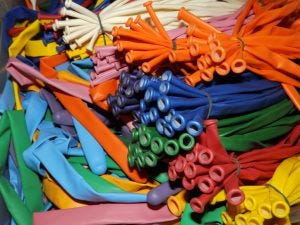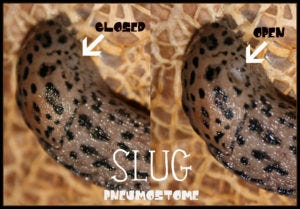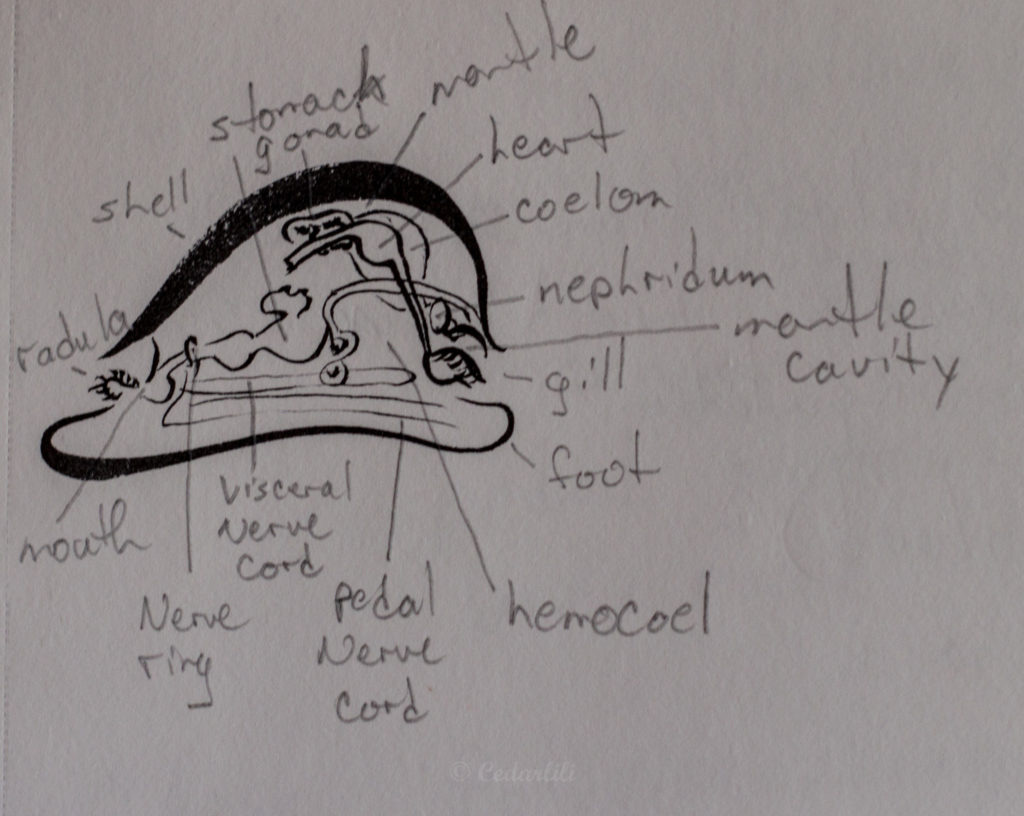Hydrostatic Skeletons: Or, why don't we have ten foot tall slugs?
In a recent post I mentioned my childhood battle with slugs, and John in Philly commented, infecting me with the delightful mental image of a small girl holding a ten-foot tall slug at bay with her salt sprayer.
So why don't we have ten-foot slugs? Elephants can get that big. Whales get even bigger, although granted they are supported by water. The answer is somewhat complex, but a big part of it is the hydrostatic skeleton, which is a common structure in many invertebrates.
Imagine a water balloon. Just as you pull it out of the bag, it's floppy, shapeless, and just lies there. When you fill it up with water, it's firm, bouncy, and takes on a globular shape. Now imagine that you lined that balloon with two layers of muscles - the longitudinal ones running from head (we'll call the knot and nozzle head, here) to anterior end, and circular muscles laid out at right angles to the longitudinal set. By contracting those muscles in turn, the water balloon could obtain a motive force that could propel it across the counter and... ok, there's another mental image I didn't need.

balloons. Just add muscles?
So this is, sort of , very simply, how a hydrostatic skeleton works. And it's why salt is a deadly enemy to slugs. Without the water, he can't hold shape, or move away from the salt, or he... Just curls up and dies. This also explains why my girlhood foes in the Pacific Rainforest when I was visiting my Grandmas were the mighty banana slugs, which can obtain prodigious sizes, for slugs. Nearly ten inches long - a small fraction of that ten feet!

click on photo for credit, and more than you wanted to know about slug lung.
So slugs are essentially a big - er, small - bag of water. Where elephants have bones to hold up all that water and keep it from compressing their organs, slugs just have lots of muscles contracting. Which brings us to the next part of the reason we just don't have to fight off rampaging monsters of slime. Lungs.
Slugs don't got em. Well, they do have a single 'lung' but it's nothing like the complex structure you'd expect to see with an elephant. Instead, a single pneumostome leads to a cavity which is lined with what passes for blood vessels (slugs don't have blood, either, not like human blood). This highly vascularized region absorbs the oxygen from the air, and those handy muscles we talked about before push the air back out as the slug moves, and brings in new. But it's not breathing, and you don't have the massive surface area ratio a human gains with our complex brachia and alveoli. Also, this is yet another way the slug loses water, and he needs water.

A model mollusc, with organs sketched in. Drawing I did in class - you can sort of imagine this as a scrunched-up slug.
Finally, and most important... waste removal. Look, possibly - no, I'll make that certainly - the most important organ in your body is that dynamic duo of your kidneys. Sure, without a beating heart your blood doesn't circulate, but... circulation doesn't help you when you fill up with toxic waste and die. Slugs have nephridium, a simple form of what we have in our kidneys, but it's just not enough to deal with a large structure. A vast slug would fill up with unfiltered hemolymph and cease to exist. He'd be an ex-slug. He'd have passed his expiration date. He'd... You get the idea.
So this, my friends, is why we don't have to fight off slugs as big as houses. Now, if slugs had metamerism! But slugs aren't annelids, like earthworms. They aren't a worm at all, they are gastropods, which is a funny word when you take it apart and see that it means stomach feet. Innit? Oh, and a snail, because of the way they are twisted around in their shell, pees on their own head. The slug may be more vulnerable to salt, but at least he doesn't have to deal with that.

Snails have shells to hold their watery bodies together.
The simple slug does get interesting. It turns out slug slime is chemically very similar to the mucus you've got up your nose. Which isn't a liquid, nor is it a solid - as you may have discovered while trying to blow your nose when you've got a cold. Mucus - and slug slime - is a liquid crystal. Not quite a liquid, it's aligning molecules give it the peculiar viscosity we find so unpleasant when we handle a slug. Which is fascinating, but I still don't plan on picking up slugs with my bare hands anytime soon!




